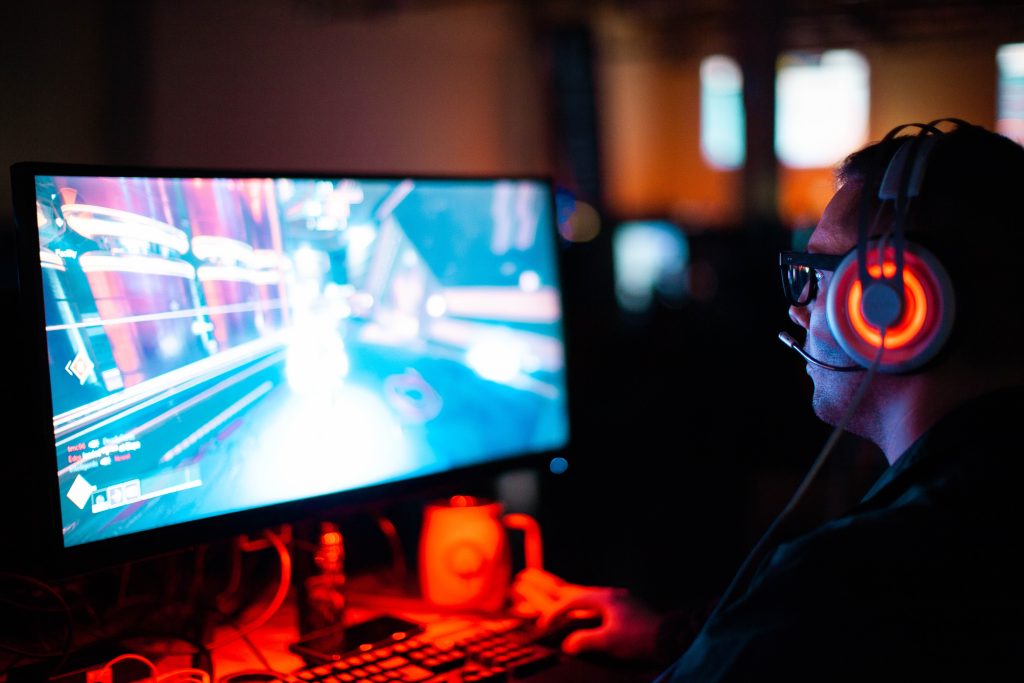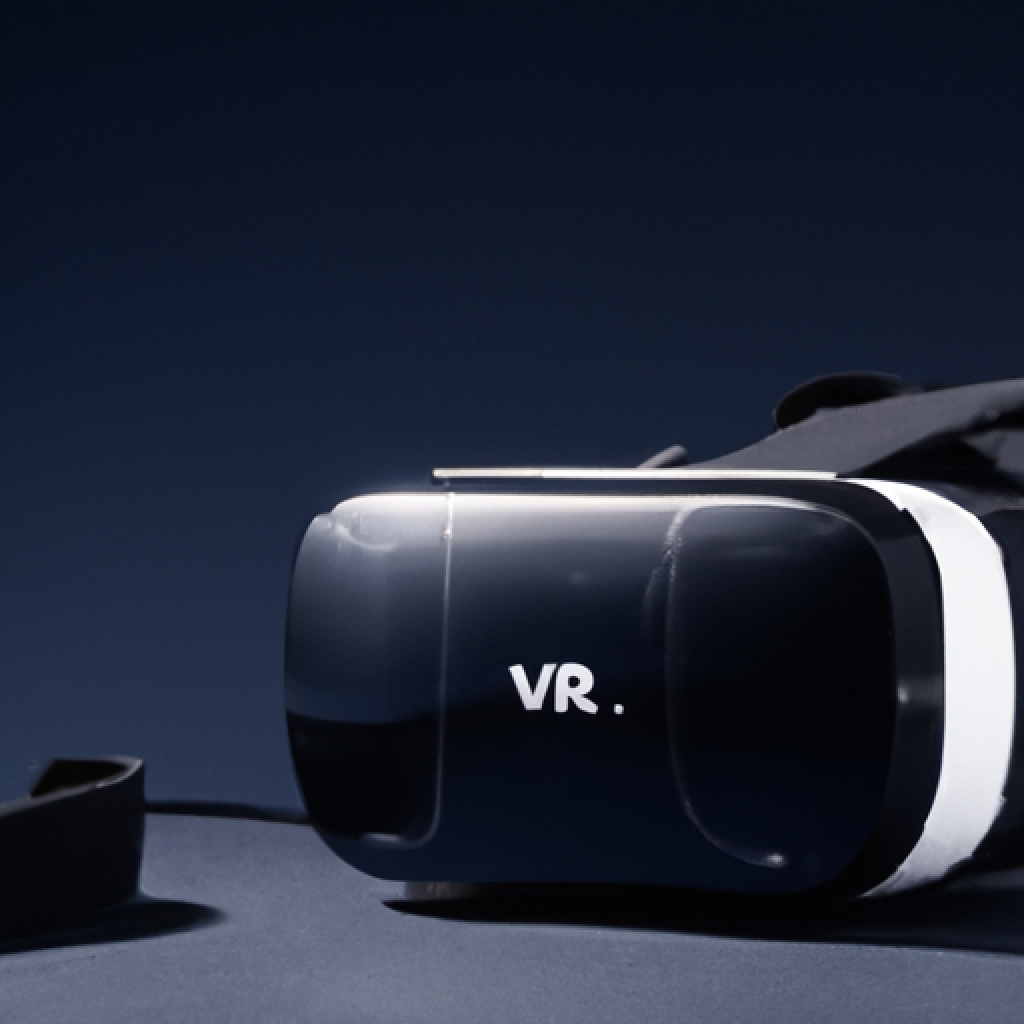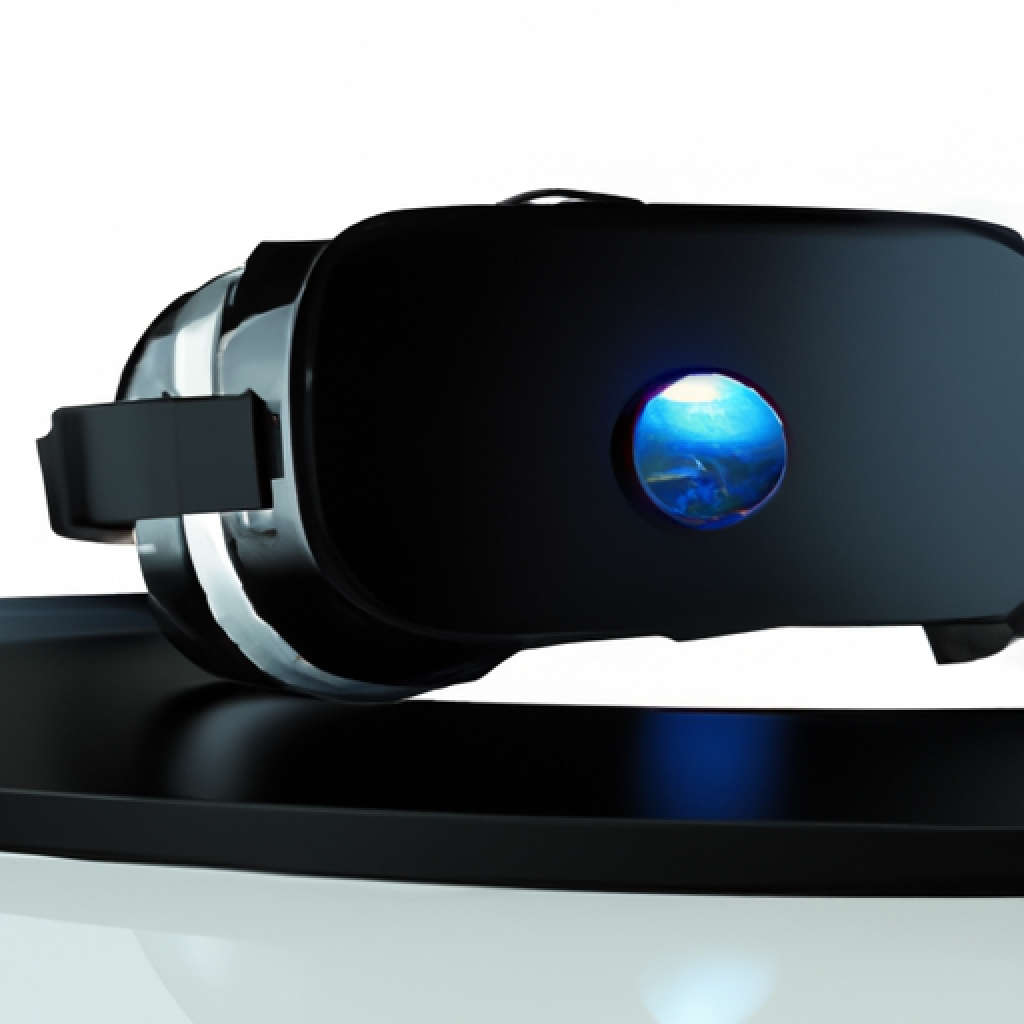How Long Should You Use VR At A Time?

I’ve always been fascinated by virtual reality (VR) technology and its ability to transport us to different worlds. But recently, I started wondering how much time we should spend in these virtual realms without any negative effects. So, I did some research and it turns out there are some guidelines on how long we should use VR at a time to ensure a safe and enjoyable experience. In this article, I’ll share what I’ve learned and dive into the recommended time limits for VR usage.

Understanding Virtual Reality
Virtual Reality (VR) is an immersive technology that allows individuals to experience and interact with computer-generated environments that feel like real-world experiences. It combines computer graphics, audio, and sensory feedback to create a simulated reality.
Defining Virtual Reality
Virtual Reality refers to the use of computer technology to create a simulated environment that can be similar to or completely different from the real world. This technology aims to provide users with a sense of presence and immersion, making them feel like they are physically present in the virtual environment.
How Virtual Reality Works
Virtual Reality works by displaying stereoscopic images or videos through a head-mounted display (HMD), providing a 3D visual experience. The HMD is usually equipped with sensors that track the user’s head movements, allowing them to look around and interact with the virtual world.
Additionally, VR systems often utilize motion controllers or other input devices to enable users to interact with virtual objects and environments. These controllers track the user’s hand movements and gestures, allowing for a more immersive and interactive experience.
Popular Uses of Virtual Reality: Gaming, Training, Therapy
Virtual Reality has gained popularity in various fields due to its ability to create realistic simulations and immersive experiences. One of the most well-known uses of VR is in the gaming industry, where players can enter virtual worlds and interact with characters and objects.
Beyond gaming, VR is also widely used for training purposes. Industries such as aviation, medicine, and the military utilize VR simulations to train personnel in a safe and controlled environment. VR training allows individuals to practice complex procedures or dangerous scenarios without any real-world risks.
Furthermore, VR has shown promise in therapeutic applications. It has been used to treat phobias, post-traumatic stress disorder (PTSD), and anxiety disorders. By creating controlled and immersive environments, VR can help individuals confront and overcome their fears in a controlled and supportive setting.
The Impact of VR on the Human Body
While Virtual Reality offers exciting possibilities, it is essential to understand the potential impact it can have on the human body, both physically and mentally.
Physical Impact: Motion Sickness, Eye Strain
One of the common physical impacts of VR is motion sickness. The immersive nature of VR can cause a disconnect between what the eyes see and the body’s vestibular system senses, leading to dizziness, nausea, and discomfort. Not everyone experiences motion sickness in VR, but it can be a significant concern for some individuals.
Additionally, prolonged use of VR can cause eye strain and fatigue. The close proximity of the screen and the necessity to focus on objects at various depths within the virtual world can put strain on the eyes and lead to discomfort or headaches.
Mental Impact: Disorientation, Detachment
Virtual Reality can also have a mental impact on users. The immersive nature of VR can cause disorientation, as individuals may temporarily lose track of their physical surroundings. This disorientation can be more pronounced if users are engaged in intense or fast-paced experiences within the virtual world.
Furthermore, some individuals may experience a sense of detachment from reality while using VR. This feeling of detachment occurs when the user becomes so absorbed in the virtual environment that they struggle to distinguish between the real and virtual worlds. While detachment can enhance the immersion, it is essential to maintain a healthy balance to prevent any negative psychological effects.
Long-Term Impact Studies
As Virtual Reality is a relatively new technology, the long-term impact on the human body is still being studied. Researchers are looking into potential effects on eyesight, vestibular systems, and cognitive functions. While current studies suggest that short-term use of VR is generally safe, further research is needed to understand any potential long-term consequences.
VR Usage Tips for Healthy Balance
To ensure a healthy and enjoyable VR experience, it is important to establish a balanced approach to VR usage. Here are some tips to help maintain a healthy balance.
Start Slow: Gradual Increased Exposure
If you are new to VR, it is advisable to start slowly and gradually increase your exposure over time. Begin with shorter sessions of 10-15 minutes and gradually increase the duration as you become more comfortable. This approach allows your body and mind to adjust to the unique sensations of VR gradually.
Regular Breaks: Importance, Duration, and Frequency
Taking regular breaks during VR sessions is crucial to avoid fatigue and to minimize the risk of motion sickness. Experts recommend taking a 10-15 minute break every hour of VR use. During breaks, it is essential to step away from the virtual environment and engage in activities that promote physical movement and rest for the eyes.
Maintaining Physical Awareness While Using VR
While it is easy to get completely immersed in the virtual world, it is important to maintain physical awareness while using VR. Be mindful of your posture, avoid excessive twisting or reaching movements, and ensure that you have a clear and safe physical space to move in. This awareness helps prevent accidents and reduces the risk of physical strain or injuries.
Recommended VR Use Duration
The duration of VR use can vary depending on an individual’s experience level and specific needs. Here are some recommended durations for different user categories:
Suggested Duration for Beginners
For individuals who are new to VR, it is advisable to start with shorter sessions of 10-15 minutes and gradually increase the duration up to 30 minutes. This allows beginners to acclimate to the VR environment without overwhelming their senses or risking discomfort.
Duration for Regular Users
Regular users who have developed some level of VR experience can typically engage in VR sessions of up to one hour. However, it is essential to take regular breaks of 10-15 minutes to rest the eyes, ease potential eyestrain, and prevent motion sickness.
Duration for Professional VR Users
Professional VR users, such as VR developers or individuals using VR for specialized training, may engage in longer VR sessions. However, it is crucial even for professionals to take regular breaks every hour and ensure they incorporate proper physical awareness and movements during extended VR use.

Age Considerations in VR Use
The use of VR can have different impacts on users of different age groups. Here are some age-related considerations to keep in mind when using VR:
Impact on Young Users
Young children under the age of 13 may have a different response to VR due to their developing visual systems. Some experts recommend avoiding VR use for children under this age. For older children, it is essential to monitor their use and ensure they take regular breaks to prevent discomfort or potential negative impacts on their developing eyesight.
Uses and Risks for Elderly Users
Elderly individuals may be more prone to motion sickness or vertigo when using VR due to age-related changes in the vestibular system. However, VR can also offer valuable opportunities for cognitive stimulation and social engagement for older adults. Caregivers and healthcare professionals should assess the appropriateness of VR use based on individual health conditions and provide necessary support and monitoring.
Age-Related Restrictions and Guidelines
While there are no specific age restrictions for VR use, it is important to follow age guidelines provided by manufacturers and developers. These guidelines can help ensure the safety and comfort of users of different age groups. Additionally, incorporating breaks, shorter sessions, and regular monitoring can further minimize risks associated with VR use across different age brackets.
Individual Factors Influencing VR Use
Apart from age considerations, several individual factors can influence the use of VR. It is important to take these factors into account to ensure a safe and comfortable experience.
Personal Health Conditions
Individuals with pre-existing health conditions such as epilepsy, heart conditions, or pregnancy may need to consult with their healthcare provider before using VR. These conditions may increase the risk of adverse reactions or discomfort during VR use.
Previous Experience with VR
Individuals who have prior experience with VR may have developed better tolerance and awareness of the potential impacts of VR. Experienced users may be more adept at managing motion sickness, disorientation, and eyestrain. However, it is still essential for experienced users to maintain a healthy balance and follow recommended guidelines.
Personal Comfort and Preference
Personal comfort and preference can play a significant role in determining the suitability of VR use. Individuals vary in their tolerance for motion sickness, eye strain, and other potential discomforts caused by VR. It is advisable to adjust VR settings, take breaks as needed, and listen to your body’s signals to ensure a comfortable and enjoyable VR experience.

VR Protective Equipment
To enhance safety and comfort during VR use, there are various protective equipment and accessories available. These can help prevent straining and maintain hygiene.
VR Accessories to Prevent Straining
Accessories such as head straps, cushioned face covers, and ergonomic controllers can enhance comfort and reduce strain during VR sessions. These accessories help distribute the weight of the VR headset evenly, provide cushioning for the face, and enable a more natural and comfortable grip for controllers.
Importance of Proper VR Equipment Maintenance
Proper maintenance of VR equipment is crucial for ensuring optimal performance and safety. Regularly cleaning the VR headset lenses and controllers can help prevent blurry vision and maintain clear visuals. Additionally, storing the equipment in a clean and dry environment can protect it from damage and prolong its lifespan.
Using VR Hygiene Covers
When sharing VR equipment or using it in public settings, using VR hygiene covers or disposable face covers is recommended. These covers provide a barrier between the user and the VR equipment, reducing the risk of bacteria or viruses spreading.
Alternatives to Continuous VR Use
While the immersive nature of VR can be captivating, continuous use may not always be practical or advisable. Here are some alternatives and strategies to incorporate a mix of real and virtual experiences.
Implementing Mix of Real and Virtual Gameplay
To maintain a healthy balance, it can be beneficial to include a mix of real-world activities and virtual gameplay. Engaging in physical exercises, outdoor activities, or spending time with friends and family can provide a counterbalance to the immersive experiences of VR.
Adjusting VR Settings for Comfort
VR systems often allow users to adjust various settings to optimize their comfort and reduce potential discomfort. This can include adjusting the field of view, reducing brightness, or using comfort modes that reduce motion sickness. Experimenting with these settings can help find the most comfortable setup for individual needs.
Using ‘Reality Breaks’ in Long VR Sessions
For extended VR sessions, incorporating reality breaks can help prevent mental fatigue and enhance comfort. Reality breaks involve stepping outside the virtual environment and spending a few minutes engaging in real-world activities. This allows the mind to rest, reorient, and maintain a connection with the physical surroundings.

Addressing Common VR-Related Issues
Several common issues can arise during VR use. Here are some tips for addressing and managing them effectively.
Dealing with VR-Induced Nausea
If you experience motion sickness or nausea during VR use, there are several strategies to alleviate these symptoms. Starting with shorter sessions, taking breaks, and maintaining a stable and comfortable physical environment can help reduce the risk of nausea. It may also help to focus on a fixed point in the virtual environment or adjust the motion settings within VR applications.
Preventing VR Eye Strain
To prevent eye strain, it is crucial to ensure proper positioning of the VR headset and take regular breaks to rest the eyes. Adjusting the interpupillary distance (IPD) settings to match your own can also minimize eye strain. If you wear glasses, it is important to use prescription lenses or find VR headsets that can comfortably accommodate glasses.
Managing VR Addiction
Like any form of entertainment, VR has the potential for addictive behavior. To manage VR addiction, it is important to set boundaries and establish healthy habits. Regularly evaluate your VR usage and ensure it does not interfere with other aspects of your life, such as work, relationships, or physical well-being. If you find it challenging to control your VR usage, consider seeking support from professionals or support groups specializing in addiction.
The Future of VR Usage
Virtual Reality technology continues to evolve, and its future holds exciting possibilities. Here are some predicted advancements and expected changes in VR usage:
Predicted Advancements in VR Technology
Advancements in hardware and software are expected to enhance the VR experience further. This includes improvements in display resolution, support for haptic feedback, more efficient tracking systems, and enhanced content creation tools. These advancements will likely lead to even more immersive and realistic virtual experiences.
Possible Changes in VR Usage Guidelines
As VR technology evolves, guidelines for VR usage may also change. As more research is conducted and new insights are gained, we can expect more precise recommendations for duration, best practices, and age-specific guidelines. The continuous refinement of VR usage guidelines aims to ensure user safety, comfort, and optimal experiences.
Innovative Solutions for Safe VR Use
Researchers and developers are also exploring innovative solutions to address and mitigate the potential risks associated with VR use. This includes advancements in motion tracking technology to reduce motion sickness, eye-tracking systems for more natural interactions, and adaptive content that can be personalized to individual comfort levels. These solutions aim to make VR experiences safer, more comfortable, and accessible to a wider range of individuals.
In conclusion, Virtual Reality offers incredible possibilities for immersive experiences, training, and therapy. However, it is important to understand and manage the potential impact VR can have on the human body. Following recommended guidelines, maintaining a healthy balance, and considering individual factors can help ensure a safe and enjoyable VR experience. With further advancements and research, the future of VR holds exciting potential for even more immersive and safe usage.








